Saint-Martin |
|
|
|
| Übersicht – Contents: | |
Diese Seite ist Teil des Projektes
Saint-Martin |
|
|
|
| Übersicht – Contents: | |
Flaggen – Flags: |
|
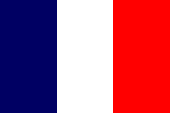 |
die Flagge Frankreichs |
|
|
|
| inoffizielle Flaggen – unofficial Flags: | |
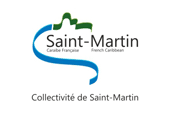 |
seit /since 2010, |
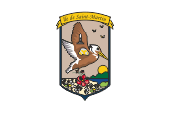 |
seit /since 2010, |
|
|
|
historische Flaggen – historical Flags: |
|
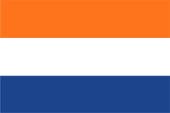 |
1631-1633, St. Martin ist Kolonie der Niederlande – St. Martin is a colony of the Netherlands, Quelle/Source, nach/by: Flags of the World |
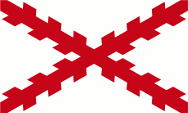 |
1633-1648, St. Martin ist eine Kolonie von Spanien – St. Martin is a colony of Spain, Quelle/Source, nach/by: Flags of the World, histor. Pix/Abbildungen   |
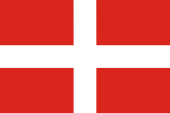 |
1651-1665, der französische Teil von St. Martin ist ein Lehen des Malteserordens – French part of St. Martin is a fiefdom of the Order of Malta, Quelle/Source, nach/by: Wikipedia (D) |
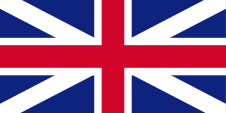 |
1672-1679, der französische Teil von St. Martin ist von England besetzt – French part of St. Martin is occupied by England, Quelle/Source, nach/by: Die Welt der Flaggen, Wikipedia (EN)    |
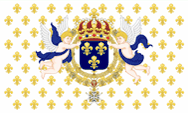 |
1679-1689, 1699-1702, 1779-1781, die gesamte Insel ist von Frankreich besetzt – the entire island is occupied by France, Quelle/Source, nach/by: Sodacan [CC BY-SA 3.0], via Wikimedia Commons   |
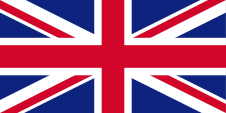 |
1781-1784, 1801-1802, 1810-1816, der französische Teil von St. Martin ist von Großbritannien besetzt – French part of St. Martin is occupied by United Kingdom, Quelle/Source, nach/by: Wikipedia (EN)   |
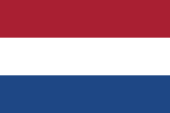 |
1703-1713, 1793-1794 der französische Teil von St. Martin ist von den Niederlanden besetzt – French part of St. Martin is occupied by the Netherlands, Quelle/Source, nach/by: Flags of the World   |
 |
ab/from 1816, der französische Teil von St. Martin kommt endgültig an Frankreich – French part of St. Martin comes finally to France, Quelle/Source, nach/by: Corel Draw 4   |
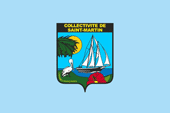 |
2007–2009, inoffizielle lokale Flagge und Flagge der Collectivité(?) – unofficial local flag and flag of the Collectivité(?), Seitenverhältnis – ratio = 2:3, Quelle/Source, nach/by: World Statesmen, Flags of the World |
|
|
|
fehlerhafte Flagge – errant Flag: |
|
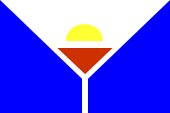 |
im Internet verbreitete, jedoch höchstwahrscheinlich fehlerhafte Flagge – spread in the internet, but most probably incorrect flag,
Quelle/Source, nach/by: Flags of the World, Wikipedia (D)   |
|
|
|
| Alle französischen Kolonien, hatten über lange Zeit keine eigene Flagge. Es musste die französische Trikolore gehisst werden. Das gilt im Prinzip bis heute. Der Status der Kolonien änderte sich über die Jahre. Einige sind heute Überseedepartements, und damit ein ultraperipherischer Teil Frankreichs und auch der EU; andere sind Überseegemeinschaften, die autonom sind, und nicht Teil Frankreichs oder der EU. Überseedepartements gehören – nicht wie die Departements des Mutterlandes – zu keiner administrativen Region Frankreichs, sondern bilden eine eigene Region. |
All French colonies had no own flag over a long period. It had to be hoisted
the French tricolor. This in principle usual until today.
The status of the colonies changed over the years. Some of them are now overseas departments, and thus a ultraperipheric part of France and of the EU; others are overseas communities, autonomous, and not a part of France or the EU. Overseas departments belong – in contrast to the departments of the motherland – to no administrative region of France, they are a separate region. |
| Die Gebietskörperschaft muss demzufolge offiziell die Flagge Frankreichs verwenden, jedoch können der Generalrat als oberstes gewähltes Kollegialorgan eines französischen Départements und auch der Regionalrat als oberstes gewähltes Kollegialorgan einer französischen Region eigene Flaggen haben. | The territorial entity has therefore officially to use the flag of France. However, the General Council as the highest elected collegial body of a French Department and the Regional Council as the highest elected collegial body of a French Region can have their own flags. |
| Diese Départements- und Regionsflaggen haben allerdings oft das Erscheinungsbild von Firmenflaggen mit Logos oder gar stilisierten Bildern, wirken lieblos, unhistorisch, technokratisch und modernistisch, denn im streng zentralistischen Frankreich wird jedwede Regionalität oder gar ein Bezug zur Geschichte vermieden. Darum sind diese Regions-Logo-Flaggen unbeliebt und werden kaum benutzt. | These flags of departments and regions, however, have oftenly the appearance of company flags with logos or even stylized images, appear carelessly, ahistorical, technocratic and modernist, because in the strictly centralist France is avoided any regionalism or even a historical subscription. Because of that these logo flags of regions are unpopular and are rarely used. |
| Die Quellenlage zu den sonstigen Flaggen des Landes ist recht dürftig, die Flaggen sind einigermaßen bekannt, jedoch nur schwer zuzuordnen. Von daher erhebt der folgende Text keinen sichersn Anspruch auf Richtigkeit: |
The sources on the other flags of the country are rather poor, the flags are
known to some extent, but difficultly to assign. Therefore, the following text does not claim to be correct: |
| Die Flagge des Regionalrats zeigt das Logo von St. Martin, zwei Schleifen in Blau und Grün, welche die Buchstaben S und M darstellen sollen, dazu die Inschriften "Caraïbe Française", "French Caribbean" und "Collectivité de Saint-Martin". Das Logo findet offiziell, überall auf allen Verlautbarungen der Behörden Anwendung. | The flag of the Regional Council shows the logo of St. Martin, two loops in blue and green, which are intended to represent the letters S and M, further the inscriptions "Caraïbe Française", "French Caribbean" and "Collectivité de Saint-Martin". The logo is officially used, everywhere at all pronouncements of the authorities. |
| Für private und touristische Zwecke gibt es noch eine Art Wappen, Emblem genannt, das auf einem einfarbigen weißen Flaggentuch präsentiert wird. Bis 2010 – als ein neues Emblem angenommen wurde – wird auch ein hellblaues Flaggentuch erwähnt. | For private and tourist purposes, there is a kind of crest, called emblem, which is presented on a plain white bunting. Until 2010 – when a new emblem was adopted – is mentioned a pale blue bunting. |
| Eine weitere, verbreitete Flagge ist offenbar als Hoax gestartet und als inoffizielle Flagge von St. Martin im Internet gelandet, denn sie ist im Internet oft als solche zu finden. Auf der Insel ist sie völlig unbekannt und nirgends zu sehen. Ihr Schöpfer nahm offenbar die in der Schreibung vorhandene Ähnlichkeit "Martin" und "Martini" als Anlass, ein gefülltes und mit Zitrone dekoriertes Martiniglas auf eine blaue Flagge zu übertragen. | Another wide spread flag is apparently started as a hoax and ended up in the Internet as an unofficial flag of St. Martin, because it is in the internet often seen as such. On the island itself it is completely unknown and nowhere to be seen. Its creator took apparently the similarity in the writing of the words "Martin" and "Martini" as an opportunity to transmit a filled and with lemon decorated martini glass on a blue flag. |
| Quelle/Source nach/by: Flags of the World | |
|
|
|
| Wappen – Coat of arms: | |
 |
seit/since 2010, Wappen von Saint-Martin – coat of arms of St. Martin, Reproduktion einer gemalten Vorlage – Reproduction of a painted template Quelle/Source, nach/by: World Statesmen |
 |
bis/to 2010, Wappen von Saint-Martin – coat of arms of St. Martin, Quelle/Source, nach/by: Flags of the World |
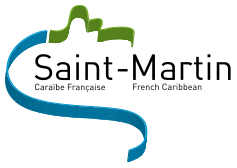 |
Logo von Saint-Martin – logo of St. Martin, Quelle/Source: Wikimedia Commons |
|
|
|
| Für private und touristische Zwecke gibt es eine Art Wappen. Es wird Emblem genannt. Bis 2010 zeigte es eine Küstenlandschaft mit Sonnenaufgang, Palmenzweigen und einem Segelschiff. Im Vordergrund war ein Pelikan zu sehen, als Vertreter der regionalen Fauna, und eine Flamboyant-Blume, als Vertreter der regionalen Flora. Eine goldene Inschrift im schwarzen Schildhaupt zeigte: "Collectivité de Saint-Martin", eine weitere Inschrift im Schildfuß "Caraïbe Française". Im Rahmen eines Wettbewerbs wurde 2010 ein neues Emblem geschaffen. Es zeigt wieder den Pelikan, jetzt jedoch auffliegend, auch gelbe Schmetterlinge, und ebenso Flamboyant und Coralita Blumen, das Grenzdenkmal, Salz, Meer, Sonnenaufgang, Berge und Muscheln. Diese Motive erschienen schon im Jahr 1648 auf dem Grenzvertrag zwischen den Niederlanden und Frankreich, der die Insel St. Martin aufteilte. Das Schildhaupt ziert ein goldenes Spruchband mit der Inschrift "Île de Saint-Martin". |
For private and tourist purposes, there is a kind of crest. It is just
called emblem. To 2010 it showed a coastal landscape with sunrise, palm
branches and a sailing ship. In the foreground was to see a pelican, as a
representing the regional fauna, and a flamboyant flower, representing the
regional flora. A golden inscription in the black head of the shield showed
the golden inscription: "Collectivité de Saint-Martin", another inscription
in the bottom of the shield showed: "Caraïbe Française". With a competition was created a new emblem in 2010. It shows again the pelican, but now flying up, also yellow butterflies; and further Flamboyant and Coralita flowers, the border monument, salt, sea, sunrise, mountains and sea shells. All these motifs already appeared in 1648 on the border treaty between Netherlands and France, which divided the island of St. Martin. The head of the shield is decorated with a golden banner with the inscription "Ile Saint Martin". |
| Quelle/Source, nach/by: Flags of the World | |
|
|
|
| Landkarten – Maps: |
Lage – Position: |
Landkarte des Landes – Map of the Country: |
Landkarte des Landes – Map of the Country: |
| Zahlen und Fakten – Numbers and Facts: | |
|
|
|
|
|
|
|
|
|
|
|
|
|
|
|
|
|
|
| Quelle/Source: Wikipedia (D), Wikipedia (EN), CIA World Factbook | |
|
|
|
|
1493 · Christoph Kolumbus entdeckt die Insel am 11.
November, dem Tag des Heiligen Martin, und nennt sie "Isla de San Martín" 1625 · Gründung einer französischen Siedlung 1631-1633 · St. Martin ist Kolonie der Niederlande 1633 · St. Martin wird eine Kolonie von Spanien 1638 · Gründung einer spanischen Siedlung 1648 · Gründung einer französischen Siedlung 23.03.1648 · offizielle Teilung der Insel zwischen Frankreich und den Niederlanden 1651-1665 · der französische Teil von St. Martin ist ein Lehen des Malteserordens 1672-1679 · der französische Teil von St. Martin ist von England besetzt 1679-1689 · die gesamte Insel ist von Frankreich besetzt 1689-1792 · der niederländische Teil von St. Martin untersteht der Verwaltung der Niederländischen Westindienkompanie 1690-1699 · die gesamte Insel ist von England besetzt 1699-1702 · die gesamte Insel ist von Frankreich besetzt 1702 · der offiziell französische Teil von St. Martin ist von Großbritannien besetzt 1703-1713 · der französische Teil von St. Martin ist von den Niederlanden besetzt 1744-1748 · der französische Teil von St. Martin ist von Großbritannien besetzt 1759-1763 · der französische Teil von St. Martin ist von Großbritannien besetzt 1779-1781 · die gesamte Insel ist von Frankreich besetzt 1781 · die gesamte Insel ist von Großbritannien besetzt 1781-1784 · der französische Teil von St. Martin ist von Großbritannien besetzt 1793-1794 · die gesamte Insel wird von den Niederlanden verwaltet 1794-1795 · der französische Teil von St. Martin ist von Großbritannien besetzt 1795-1801 · die gesamte Insel ist von Frankreich besetzt 1801-1802 · die gesamte Insel ist von Großbritannien besetzt 1810-1816 · die gesamte Insel ist von Großbritannien besetzt 1816 · offizielles Wiederherstellen der Teilung zwischen Frankreich und den Niederlanden 1936 · der niederländische Teil von St. Martin nimmt offiziell als Landesnamen die niederländische Schreibweise "Sint Maarten" an 1940-1943 · Zweiter Weltkrieg, der französische Teil von St. Martin gehört zu Vichy-Frankreich Juli 1943 · Zweiter Weltkrieg, der französische Teil von St. Martin geht auf das Freie Frankreich über 1946-1963 · der französische Teil von St. Martin gehört zu Guadeloupe 1963-2007 · der französische Teil von St. Martin und St. Barthélémy bilden als Teil von Guadeloupe das "Arrondissement Saint-Martin et Saint-Barthélémy" 2003 · Volksabstimmung im französischen Teil von St. Martin zugunsten mehr Eigenständigkeit 21.02.2007 · St. Martin und St. Barthélemy werden aus dem Übersee-Territorium Guadeloupe ausgegliedert, St. Martin wird eine separate Überseegemeinschaft, ein autonomes Übersee-Territorium, das nicht Teil Frankreichs ist |
|
|
|
1493 ·
Christopher Columbus discovers the island on 11th of November, the day of
St. Martin, and calls it "Isla de San Martín" 1625 · founding of a French settlement 1631-1633 · St. Martin is a colony of the Netherlands 1633 · St. Martin is a colony of Spain 1638 · founding of a Spanish settlement 1648 · founding of a French settlement 23rd of March in 1648 · official division of the island between France and the Netherlands 1651-1665 · French part of St. Martin is a fiefdom of the Order of Malta 1672-1679 · French part of St. Martin is occupied by England 1679-1689 · the entire island is occupied by France 1689-1792 · the Dutch part of St. Martin is under administration of the Dutch West India Company 1690-1699 · the entire island is occupied by England 1699-1702 · the entire island is occupied by France 1702 · the official French part of St. Martin is occupied by United Kingdom 1703-1713 · the French part of St. Martin is occupied by the Netherlands 1744-1748 · the French part of St. Martin is occupied by United Kingdom 1759-1763 · the French part of St. Martin is occupied by United Kingdom 1779-1781 · the entire island is occupied by France 1781 · the entire island is occupied by United Kingdom 1781-1784 · the French part of St. Martin is occupied by United Kingdom 1793-1794 · the entire island is owned by the Netherlands 1794-1795 · the French part of St. Martin is occupied by United Kingdom 1795-1801 · the entire island is occupied by France 1801-1802 · the entire island is occupied by United Kingdom 1810-1816 · the entire island is occupied by United Kingdom 1816 · official restore the division between France and the Netherlands 1936 · the Dutch part of St. Martin officially takes over the Dutch spelling "Sint Maarten" as name of the country 1940-1943 · Second World War, the French part of St. Martin is part of Vichy France July 1943 · Second World War, the French part of St. Martin goes over to Free France 1946-1963 · the French part of Saint Martin belongs to Guadeloupe 1963-2007 · the French part of St. Martin and St. Barthélémy form - as a part of the Guadeloupe - the "Arrondissement Saint-Martin et Saint-Barthélémy" 2003 · referendum in the French part of St. Martin in favor of more autonomy 21st of February in 2007 · St. Martin and St. Barthelemy are hived off the overseas territory of Guadeloupe, St. Martin becomes a separate overseas community, an autonomous overseas territory which is not part of France |
| Quelle/Source: Wikipedia (D), World Statesmen |
|
|
| Am
Namenstag des Heiligen Martin, am 11. November 1493, entdeckt Christoph
Kolumbus die Insel, und nennt sie aus diesem Anlass "Isla de San Martín".
Die Insel wurde 1648 zwischen Frankreich und den Niederlanden aufgeteilt.
Allgemein gültig ist die Bezeichnung "St. Martin", jedoch wird der
französische Teil von St. Martin "Saint-Martin" genannt, der niederländische
Teil nennt sich "Sint Maarten". Der Heilige Martin lebte von 316 bis 397, war Bischof von Tours und teilte als Soldat seinen Mantel mit einem Bettler. |
On the name-day of St. Martin, on 11th of November in 1493, Christopher
Columbus discovered the island, and calls it on this occasion "Isla de San
Martín". The island became divided in 1648 between France and the Netherlands. Generally valid is the name "St. Martin", but the French part of St. Martin's is called "Saint-Martin", the Dutch part is called "Sint Maarten". Holy Martin lived from 316 to 397 A.D. was Bishop of Tours and divided as soldier his coat with a beggar. |
| Quelle/Source: Wikipedia (D), Wikipedia (EN) | |
|
|
|